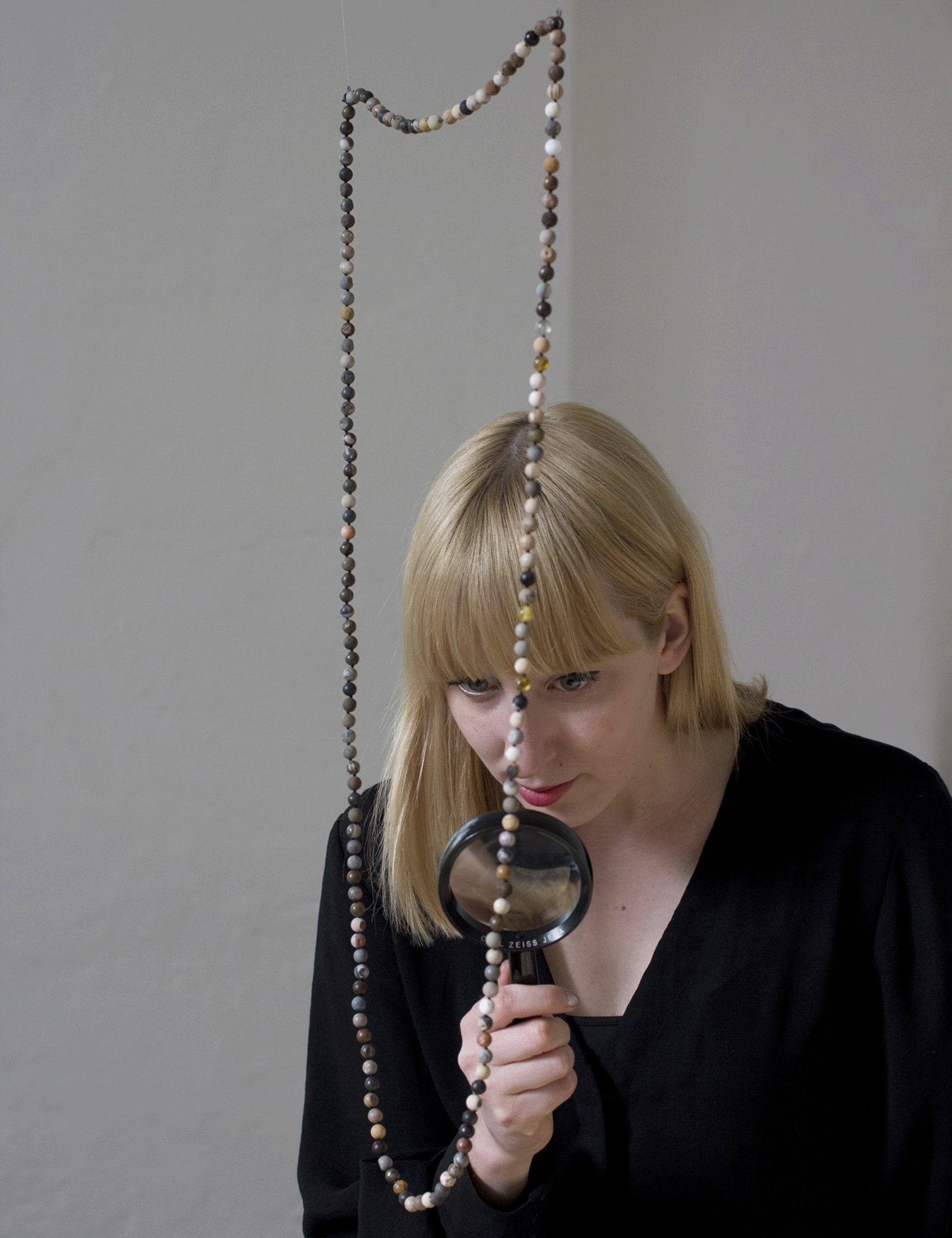Necklace made from 3 billion year old fossil goes on show at Wellcome Collection
The necklace, carved from 170 spherical beads each made from a different material, includes the first single celled life on the planet

Your support helps us to tell the story
From reproductive rights to climate change to Big Tech, The Independent is on the ground when the story is developing. Whether it's investigating the financials of Elon Musk's pro-Trump PAC or producing our latest documentary, 'The A Word', which shines a light on the American women fighting for reproductive rights, we know how important it is to parse out the facts from the messaging.
At such a critical moment in US history, we need reporters on the ground. Your donation allows us to keep sending journalists to speak to both sides of the story.
The Independent is trusted by Americans across the entire political spectrum. And unlike many other quality news outlets, we choose not to lock Americans out of our reporting and analysis with paywalls. We believe quality journalism should be available to everyone, paid for by those who can afford it.
Your support makes all the difference.A necklace that has been more than 3 billion years in the making has gone on display at the Wellcome Collection as part of a new exhibition using art to look at global health issues.
Among the standout pieces is Fossil Necklace by Katie Paterson, who was artist in residence at the Wellcome Trust Sanger Institute, Cambridge.
“That was where they researched the genome, and I got really interested in genetic evolution,” the artist said. “That’s what sparked the idea to make this piece.”
The necklace has 170 carved spherical beads each made from a different material. “It starts with the first single celled life on the planet, from 3.2 billion years ago,” she said.
The piece, one of the earliest forms of rock on the planet, came from South Africa, and the necklace “works its way through geological time. From single celled organisms to the multi-celled, then the first creatures to open their eyes. It’s about significant moments in human evolution.”
It took about nine months of continuous work to source and carve the fossils. She travelled to fossil fairs and auctions around the world.
“About half of them were hard to track down as I was trying to show this great diversity not only of species but places around the globe.” Some of the trickier assignments included tracking coral from Java, a caribou tooth from Alaska and amber from deep in a forest in Congo.
It was not a problem to carve the fossils as there are still more available. Ms Paterson said: “I would not cut up anything precious. It’s the museums that have the really special pieces.”
Lena Bui’s drawings, photography, video and installation looks at zoonosis, the transfer of disease from animals to humans, while Elson Kambulu’s work looks to examine the cultural complexity of medicine and research in Malawi.
Also among the six artists are Thai physical theatre group B-Floor Theatre, which uses shadow puppets to look at the challenges facing immunologists.
Danielle Olsen, the exhibition curator, said: “Placing artists within scientific research institutions is one small way of bridging discourses and practices, creating opportunities for self-reflection. The exhibition asks questions about what we understand by global health.”
Wellcome Colletion's winter exhibition Foreign Bodies, Common Ground runs until February 10.
Join our commenting forum
Join thought-provoking conversations, follow other Independent readers and see their replies
Comments